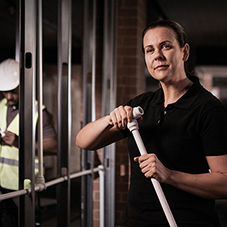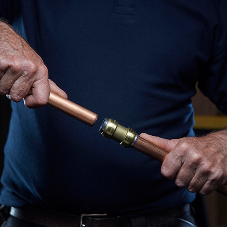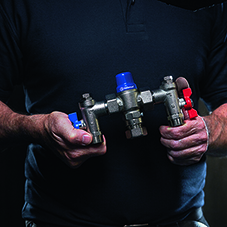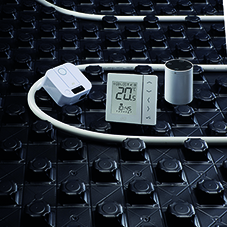A wet room has become an increasingly popular choice for homeowners. Besides being a new interior design trend, wet rooms can also offer the perfect solution for smaller bathrooms that don’t have enough space for either a bathtub or shower, let alone both.
As more people are becoming increasingly interior design aware, customers, for example, don’t expect to see exposed pipework in their sleek and modern wet rooms. With such expectations from a design perspective, plumbers need to consider reliable solutions that are easier to install in confined spaces.
Here is a list of things to keep in mind when fitting a wet room to provide best practice from both a design and installation perspective.
Make sure you have the right TMV for the job
Regardless of whether it’s a new build or a renovation, bathroom space comes at a premium. So, squeezing in all of the plumbing essentials can quickly become a difficult task. This is especially true of Thermostatic Mixing Valves (TMVs), which have been a legal requirement for baths in new domestic homes since 2010, however it is best practice to install them in retrofits too.
The majority of TMVs are marketed for installation in commercial buildings, and therefore can be quite bulky, which means that fitting these valves in tight spaces, such as underneath a bath, can present an equally bulky challenge.
Installers need to implement a small and compact TMV such as the Easifit TMV from RWC’s Reliance Valves range. The smallest TMV on the market, it can be fitted in much tighter spaces than competing products. Similarly, its flat faced union connections make the installation and maintenance much easier and faster, and this efficiency is taken even further when installing the Easifit TMV that comes with JG Speedfit push-fit connections. In this instance, the installation requires no tools for fitting, making it easier to maneuver in tight spaces.
Make use of flexible pipes to conceal pipework
We have established that exposed pipework is not preferred in most modern wet rooms, especially when the emphasis is on the look and design. This means that pipes that connect to showers and sinks, need to be hidden behind walls, under floors, or beneath free-standing fixtures.
Exposed pipework typically makes use of soldered copper pipes but the rigidity of these materials makes it extremely difficult and time consuming to conceal them behind walls and so on. To get around this, flexible polybutylene pipes can be used to cable through joists, behind walls or fixtures.
Pipes such as RWC’s JG Layflat pipe are available in varying lengths, all of which can bend and flex around tight spaces, which of course makes it the ideal solution for installations that need to be hidden out of sight, whilst minimising the need for joints by enabling longer pipe runs.
Make installation easier with flexible push-fit hoses
Hiding pipework behind pedestals or in vanity units can be challenging, especially if you are using rigid pipework, which takes time and effort to install regardless of the location. This doesn’t even consider the difficulties that can arise from second fix installations, which most installers will agree are even more tricky. The final connections from the first fix pipework to the outlets is often done blindly and in awkward spots, so manoeuvring tools can become difficult.
Flexi hoses, therefore, can be a miracle fix for many installers. Made from braided metal or white PVC, the hoses are flexible and can bend around existing pipework or obstacles, without compromising connections. Hoses such as those in the JG Speedfit push-fit range can form seals with just one push, and on average using flexi hoses with such push-fit connections can save you up to 40% on installation time. Whether you are looking to connect a bathroom or basin tap, or the water supply to a monobloc mixer tap, the JG Speedfit range includes push-fit and hand-tighten flexi hoses with different types of connection ends.
Another benefit of using JG Speedfit flexi hoses is that some of them come with built-in service valves. This removes the need to install an additional valve for water isolation to carry out any future repairs and maintenance work.
Push-fit your way to stunning design
While many people will opt for a more modern or minimalist wet room design, with no exposed pipework, others might prefer a more industrial look with exposed plumbing. This means incorporating traditional plumbing materials such as copper or brass, which makes sense as metal finishes can pair well with tiles or be a statement piece against a plainer wall, for example.
Using metal fittings does not require sacrificing the ease of installation however, as achieving this look can be made easier with SharkBite’s slimline brass push-fit fittings, which are easy to install in awkward spaces and don’t require any tools, flux, or solder to connect.
Work smarter, not harder
Working in compact spaces can make installations more complex and slow down project completion times. It is therefore crucial for installers to remember to work smarter and not harder.
Having a selection of smart products such as push-fit pipes, valves, and fittings, at your disposal can make delivering a contemporary bathroom finish much easier. Whether it’s a minimal or more industrial aesthetic that customers are going for, it can be delivered using solutions from RWC’s family of brands, making the job quick and easy.
Wet rooms trends - getting the most out of wet room plumbing
| T | (01895) 425333 |
|---|---|
| E | Info@RWC.com |
| W | Visit RWC – Reliance Worldwide Corporation's website |
| Horton Road, West Drayton, Middlesex, UB7 8JL |
Categories
Baths Showers Water-supply pipes Wet Rooms

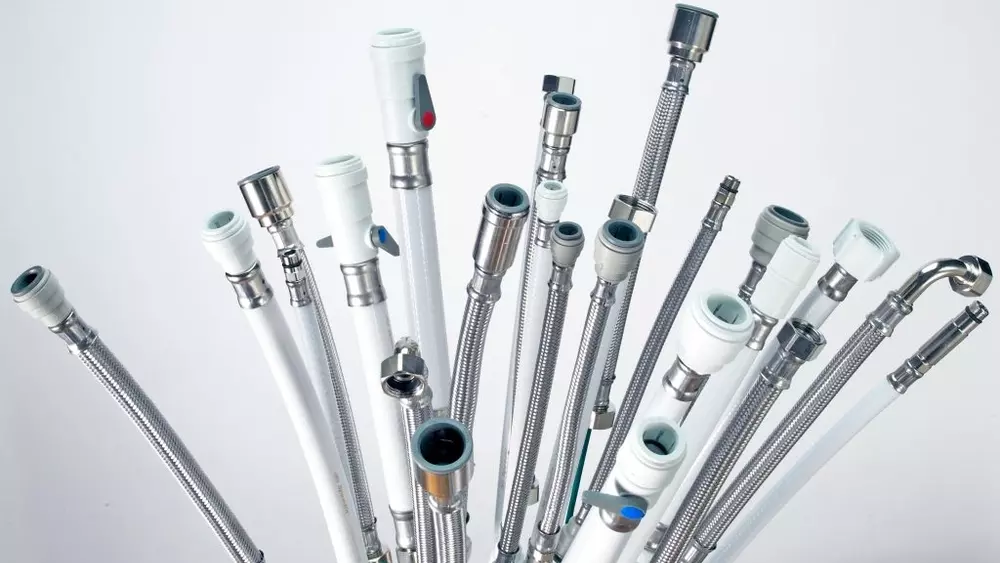

 (002)-comp104848.png)
